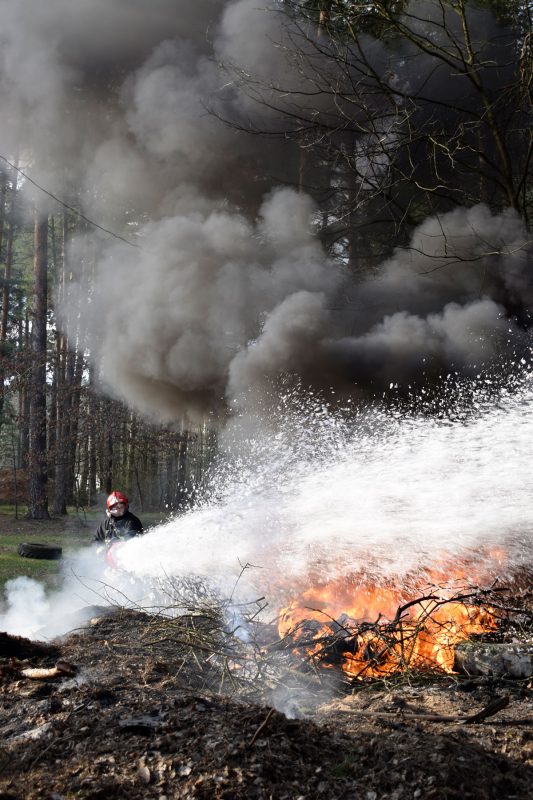For years, foam has been used as a fire fighting agent for flammable and combustible liquids. Unlike other extinguishing agents – water, dry chemical, CO2, etc., a stable aqueous foam can extinguish a flammable or combustible liquid fire by the combined mechanisms of cooling, separating the flame/ignition source from the product surface, suppressing vapors and smothering. It can also secure during long periods of time against rifles or rebirth.
Water, if used with a standard hydrocarbon fuel, is heavier than most of those liquids and if applied directly to the fuel surface, will sink to the bottom having little or no effect on extinguishment or vapor suppression. If the liquid fuel heats above 212ºF, the water can boil under the surface of the fuel, dumping the fuel out of the confined area and spreading the fire. For this reason, foam is the main extinguishing agent for all potential hazards or areas where flammable liquids are transported, treated, stored or used as an energy source.
One must understand some of the terminology associated with foam.
Foam: A firefighting foam is simply a stable mass of small air-filled bubbles that have a lower density than oil, gasoline or water. The mousse consists of three ingredients – water, concentrated mousse and air. When mixed in the right proportions, these three ingredients form an even foam cover.
Foam Solution: This is a solution of water and foam concentrate after they have been blended together in the right proportions.
Foam Concentrate: This liquid concentrate is provided by the manufacturer who, when mixed with the right proportion of water, forms a foam solution.
Finished Foam: Foam solution at the outlet of a discharge device, after ventilation.
Drainage Rate: This is the rate at which the foam solution will drain from the expanded foam mass or how long it will take 25% of the solution to drain from the foam. This is often called a quarter of a lifetime or 25% emptying time. The foam which has a fast emptying time is normally very fluid and mobile, propagating through the surface of the fuel very quickly. Although foams with longer drain times are normally less mobile, they move slowly along the fuel surface.
Expansion Rate: Volume of finished foam divided by the volume of foam solution used to create the finished foam; i.e., a ratio of 5 to 1 would mean that one gallon of foam solution after aeration would fill an empty 5-gallon container with the expanded foam mass.
Reference: https://www.chemguard.com/about-us/documents-library/foam-info/general.htm


